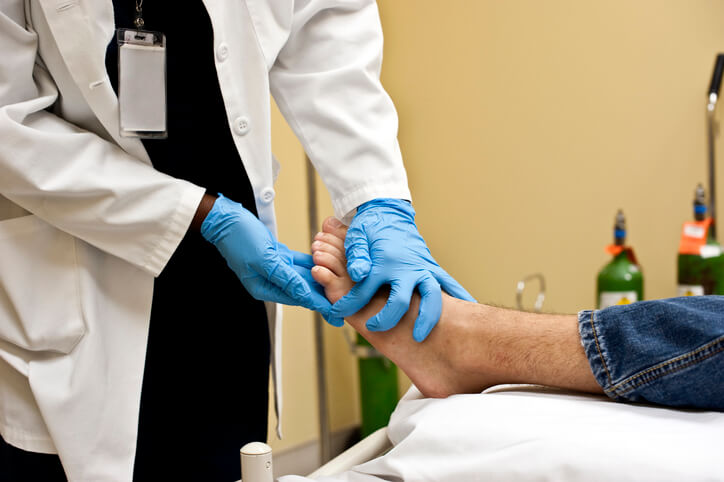There are several conditions of the foot that not only cause pain and discomfort, but can affect its physical appearance. Depending on the severity of your condition, you may need to:
- Do nothing at all, if it’s more of a cosmetic issue and not bothering your otherwise
- Find ways to prevent it from getting worse or leading to other conditions
- Perform exercises or wear something that can reduce pain and discomfort
- Have surgery to treat or correct it
In this article, we’ll discuss your options for a hammertoe.
What Are the Causes and Symptoms of a Hammertoe?
A hammer toe is a deformity of the second, third, or fourth toes. It gets its name from its appearance: the affected toe is bent at the middle joint, making it look like a hammer. Because the big toe has only two joints — the rest have three — it’s less likely to be affected. The middle three toes are most likely to be affected. A similar condition, called mallet toe, affects the joint nearest the toenail.
The affected joint might still be able to move, in which case the condition is referred to as “flexible” hammertoe, but “rigid” hammertoes, as the name suggests, means the joint won’t move, and can be out of proper alignment. Your hammertoe might be in a state between flexible and rigid, as well.
The appearance of a hammertoe is visibly obvious, and you’ll likely feel pain and stiffness in the affected joint, which may increase as you walk. There could be swelling or a burning sensation in the area.
In addition, if the joint is raised enough that it rubs against your shoe, you might get blisters, calluses (hardened patches of skin), or corns (small, rounded patches of thick skin).
The most common cause of hammertoes is shoes that lack proper support or don’t fit correctly. Hammertoe is one of several conditions caused or made worse by wearing high-heeled shoes.
Another cause of hammertoe could be your genetic history, because you might be predisposed to the condition especially if you have a second toe longer than the first. Those with either flat feet or high arches are susceptible to the condition, and conditions including arthritis, poor circulation, and diabetes can lead to the condition as well.
Nonsurgical Options for Hammertoe
Although most people want to avoid surgery because of potential complications and the recovery required — and surgery on your foot offers challenges unlike procedures on other parts of the body — surgery is the only way to fully straighten a hammertoe.
However, your condition might not be severe enough to require surgery, and there are several things you can do to relieve the pain and discomfort.
Footwear and orthotics: Avoid (or at least reduce) wearing shoes that are tight in the toe area, or shoes that lack support or cause pain when you walk, especially those with high heels or poor arch support.
Some shoes can be made more comfortable with inserts or orthotics that provide extra support, and you can wear a metatarsal foot pad or toe separator to relieve pressure.
Treat calluses and corns: If calluses or corns are the problem instead of (or in addition to) joint pain, then there are ways to reduce their appearance. Soften the skin with warm water and gently rub the affected area with a nail file or pumice stone.
You can also reduce corns with medicated pads, and consider wearing socks that provide a barrier between your toes and the shoe. Don’t use anything sharp to clip the skin, and speak to a doctor first if you have a circulation condition or diabetes.
Contact Our NJ Orthopedic Foot Surgeon About Hammertoe Treatment
Schedule an appointment with our NJ orthopedic foot surgeon today about diagnosing, treating, and repairing conditions such as hammertoe.
